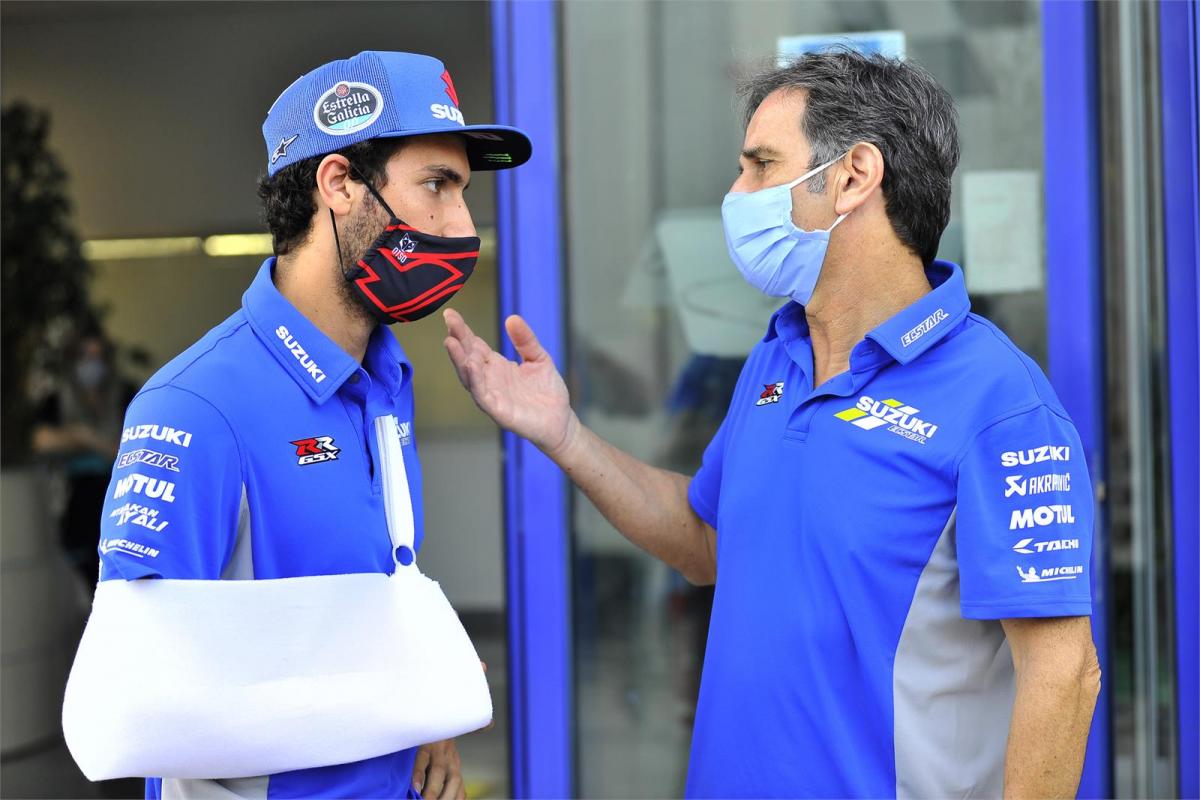
MotoGP: Bikes, Injuries and Superhumans
Grand Prix racers are a special breed. If pushing a bike to the limit at 350kph is not enough to show that, the way that riders deal with crashes definitely is. Every GP weekend riders fall at incredible speeds and, thankfully, in the most cases they get up and continue like nothing happened. When they do sustain injuries, they are often back on their bikes before you even notice they were gone.
Motorcycle racing history has seen its fair share of incredible injury recoveries. Mind Mick Doohan returning from a broken tibia and fibula after eight weeks, Barry Sheene breaking his femur and arm and being back on a bike 49 days later or Jorge Lorenzo racing in Assen 48 hours after breaking his collarbone.
MotoGP just returned to action and injuries are already grabbing headlines. Be that for Andrea Dovizioso’s heroic return from a collarbone fracture or the seemingly cursed Spanish GP with three top riders sustaining major injuries – and all of them being back riding again only a week later. All of that is reason enough to take a closer look at how riders deal with injuries.
The Walking Wounded
The racing world is an unforgivable environment. Long-term or frequent injuries for a rider mean that he is out of the game. Any sort of ambitions and hopes can end in smoke – just ask Dani Pedrosa who would likely hold a premier class title now if he was less injury-prone.
Cal Crutchlow recently commented on the need to avoid injuries in light of the shortened and compressed calendar. He stated that riders “cannot afford to get injured” and that an injury would not “be great for our championship”.
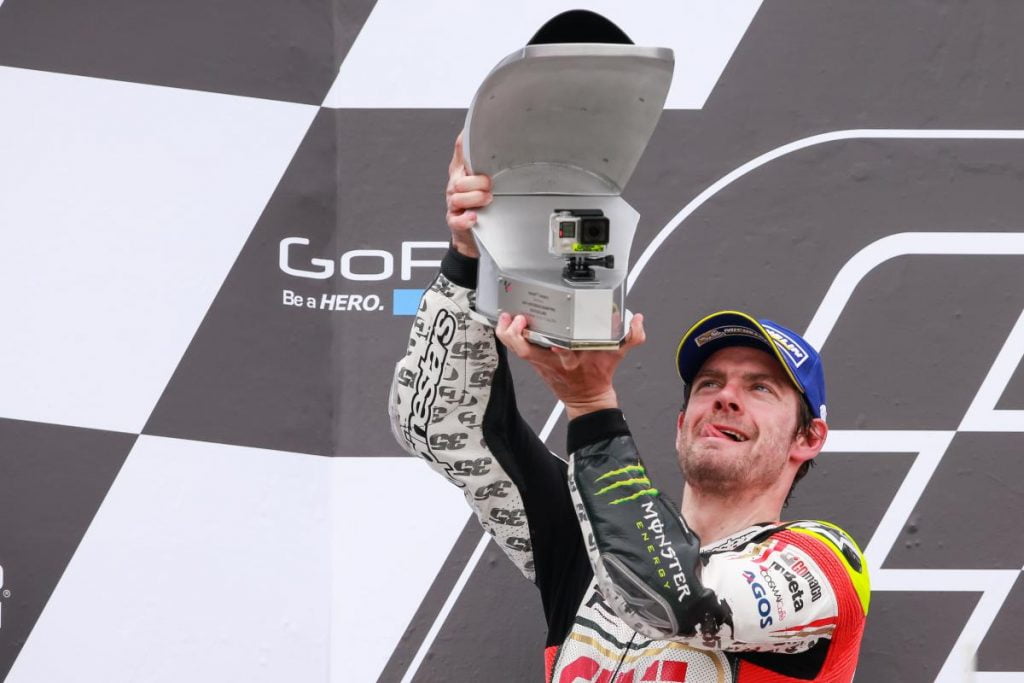
Crutchlow himself collected experience with injury comebacks in 2019. The Coventry rider achieved a podium finish at the Sachsenring less than a week after damaging his anterior cruciate ligament and fracturing the top of his right tibia.
This demonstrates a rider’s mindset – the racing and the championship are high-priority. Hence riders get back on their bikes as soon as possible and they are prepared to work hard for it and break pain barriers down.
Superhuman Recoveries
The time it takes riders to bounce back from injuries is ridiculously short. Andrea Dovizioso rode to third at the 2020 season opener in Jerez just over two weeks after he broke his collarbone – an injury that would knock the average human being out for six to eight weeks.
In the same race Marc Márquez fractured his humerus and subsequently underwent surgery. The world champion returned for the Andalucia GP, a week after an injury with a recovery time of three months. Though he decided to retire after completing FP3 and 4, he demonstrated an incredible effort and aims to be back in Brno.
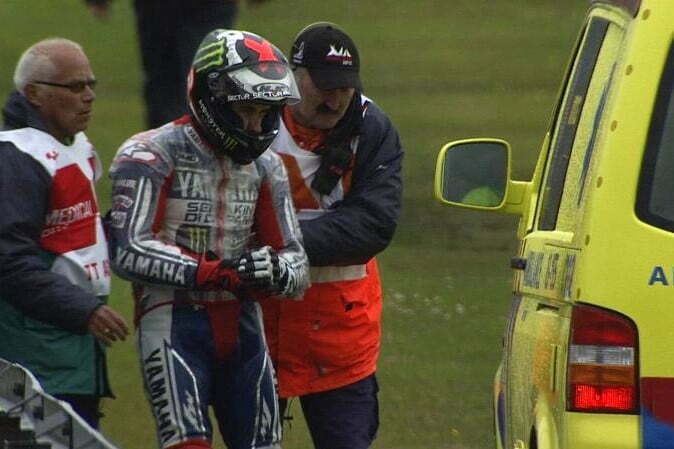
The possibly most incisive injury comeback was that of Jorge Lorenzo at the 2013 Dutch GP. Lorenzo fractured his left collarbone in a crash during practice on Thursday. He promptly headed to Barcelona for surgery and returned to Assen in time for the race on Saturday. Roughly 48 hours after breaking his collarbone, the Spaniard was back riding a bike in anger. While Lorenzo was in visible pain, he finished in an incredible fifth place.
More precedent cases illustrate just how quickly riders are back on their bikes after sustaining injuries, particularly in comparison to how long it would usually take to recover.
| Injury | Usual Recovery Time | Riders’ Recovery Time |
|---|---|---|
| Broken Collarbone | 6 to 8 Weeks | Jorge Lorenzo: 48 Hours (2013) |
| Broken Arm | 6 to 8 Weeks | Héctor Barberá: 3 Weeks (2006) |
| Broken Wrist | 6 to 8 Weeks | Kevin Schwantz: 24 Hours (1994) |
| Finger Fracture | 4 to 6 Weeks | Marc Márquez: 8 Days (2015) |
| Broken Femur | 4 to 6 Months | Toni Elías: 50 Days (2007) |
| Broken Tibia and Fibula | 6+ Months | Valentino Rossi: 41 Days (2010) |
| Broken Ankle | 6 to 12 Weeks | Stefan Bradl: 3 Weeks (2013) |
Physiotherapy and Special Training Programmes
Besides a crazy pain threshold, pure determination and what can only be described as a special mindset, riders undergo sophisticated treatments and therapies for a speedy return to riding.
To start with a more common method, physiotherapy is a standard in injury treatment. Riders will work with trusted therapists and follow intensive regimes tailored to them and their injury.
Alongside specialised physiotherapy, riders work through training programmes that aid the return to full fitness and help to prevent further injuries. Personal trainers may decide to focus on developing strength in previously injured parts of the body or the area around it to achieve long-term improvement.
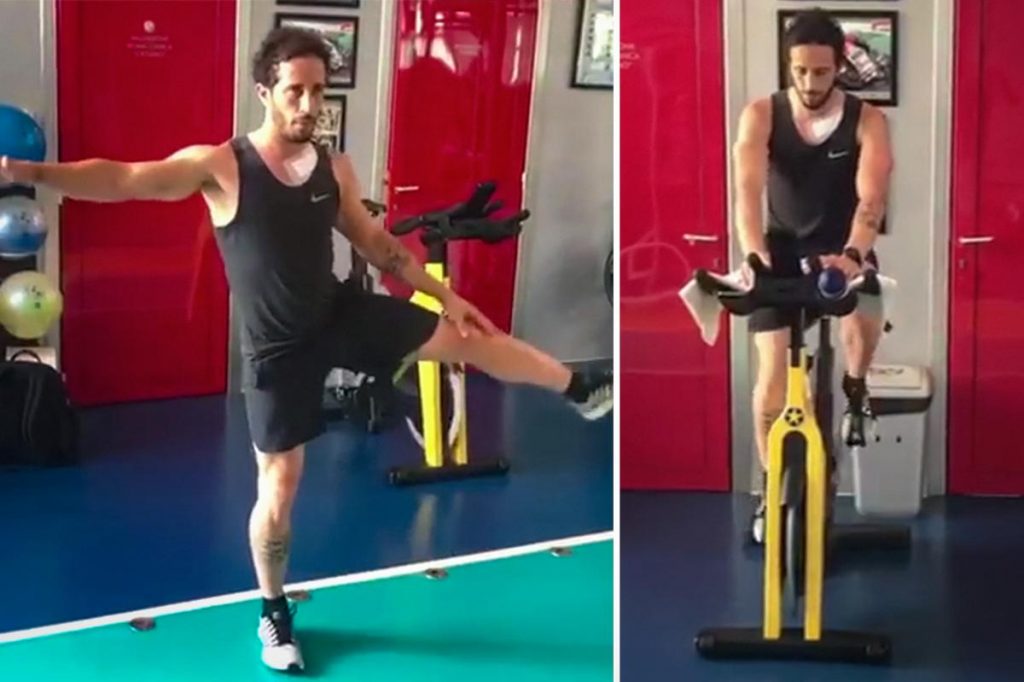
When recovering from his second shoulder surgery in November 2019, Marc Márquez stated that he was doing two hours of specialised rehab in the morning as well as two more in the afternoon and spent almost all day working on his body to return to fitness.
Back in the paddock, the recovery treatment does not stop. Riders will drop in at the Clinica Mobile on a regular basis for ongoing physio or deep tissue massages.
Hyperbaric Chambers
Hyperbaric chambers have become a popular method to support the recovery from broken bones. When applying hyperbaric oxygen therapy (HBOT) the rider receives 100 per cent pure oxygen in a specially pressurised atmospheric chamber.
The ambient pressure inside these chambers is about three times higher than in the outside world. Breathing pure oxygen at this pressure can increase the concentration of oxygen that circulates through the body by up to three times.
Tissue needs an adequate oxygen supply to function and even more so to recover from injury. The additional oxygen intake can therefore help the damaged tissue heal and speed up the recovery process.
A hyperbaric chamber was essential to Randy de Puniet’s return from a broken leg in 2010 – the Frenchman was back riding just 26 days after sustaining the fracture. More recently, HBOT has become part of Alex Rins’ treatment of the fractured shoulder he sustained at the 2020 Spanish GP. He is on his bike again for the Andalucia GP now only a week later.
A Different Breed
Safety developments have admirably made racing kinder than it was in days gone by. Air fences and airbags reduce the risk of major injuries significantly and the on site treatment opportunities in the Clinica Mobile are outstanding.
But crashes and injuries still happen – they are part of racing. How riders respond to them is nothing short of amazing. As ordinary humans we can only marvel at the physical as well as mental strength and the determination riders display when dealing with an injury.
They complete extensive and often excruciating physiotherapies and training sessions to get their body into a state where it can endure the physical demands of riding a MotoGP bike. Once the physical requirements are met, it is the riders’ mindset that allows them to get back on a bike – they still feel the pain, they just push through it.
For their own protection, riders have to undergo checks to be declared fit to ride. After Cal Crutchlow broke his ankle at the 2015 British GP he was not allowed back on a bike until he demonstrated that he could run back and forth across the medical centre and perform a series of heel and toe lifts. Crutchlow later described this procedure as “murder”, but he endured it – because for a MotoGP rider, pain alone is not enough of a reason to miss a race.


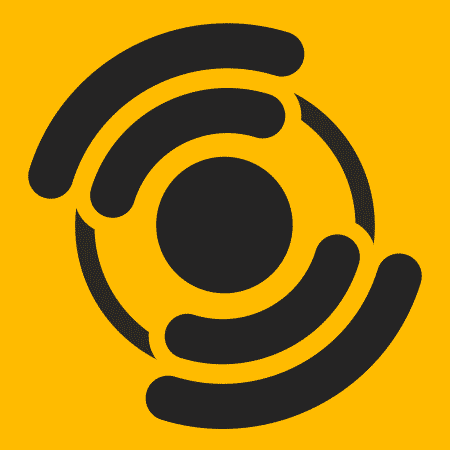
![Private: [ID: 71rYi-xncgM] Youtube Automatic](https://motorradio-xijqc.projectbeta.co.uk/wp-content/uploads/2024/08/private-id-71ryi-xncgm-youtube-a-1-360x203.jpg)
![Private: [ID: 1SfHxvC8Doo] Youtube Automatic](https://motorradio-xijqc.projectbeta.co.uk/wp-content/uploads/2024/07/private-id-1sfhxvc8doo-youtube-a-1.jpg)
![Private: [ID: H6XRkf6kROQ] Youtube Automatic](https://motorradio-xijqc.projectbeta.co.uk/wp-content/uploads/2024/07/private-id-h6xrkf6kroq-youtube-a-1-360x203.jpg)
![Private: [ID: Kb6w-qAmKls] Youtube Automatic](https://motorradio-xijqc.projectbeta.co.uk/wp-content/uploads/2023/12/private-id-kb6w-qamkls-youtube-a-360x203.jpg)
![Private: [ID: CcpwYw20k3k] Youtube Automatic](https://motorradio-xijqc.projectbeta.co.uk/wp-content/uploads/2024/07/private-id-ccpwyw20k3k-youtube-a-360x203.jpg)
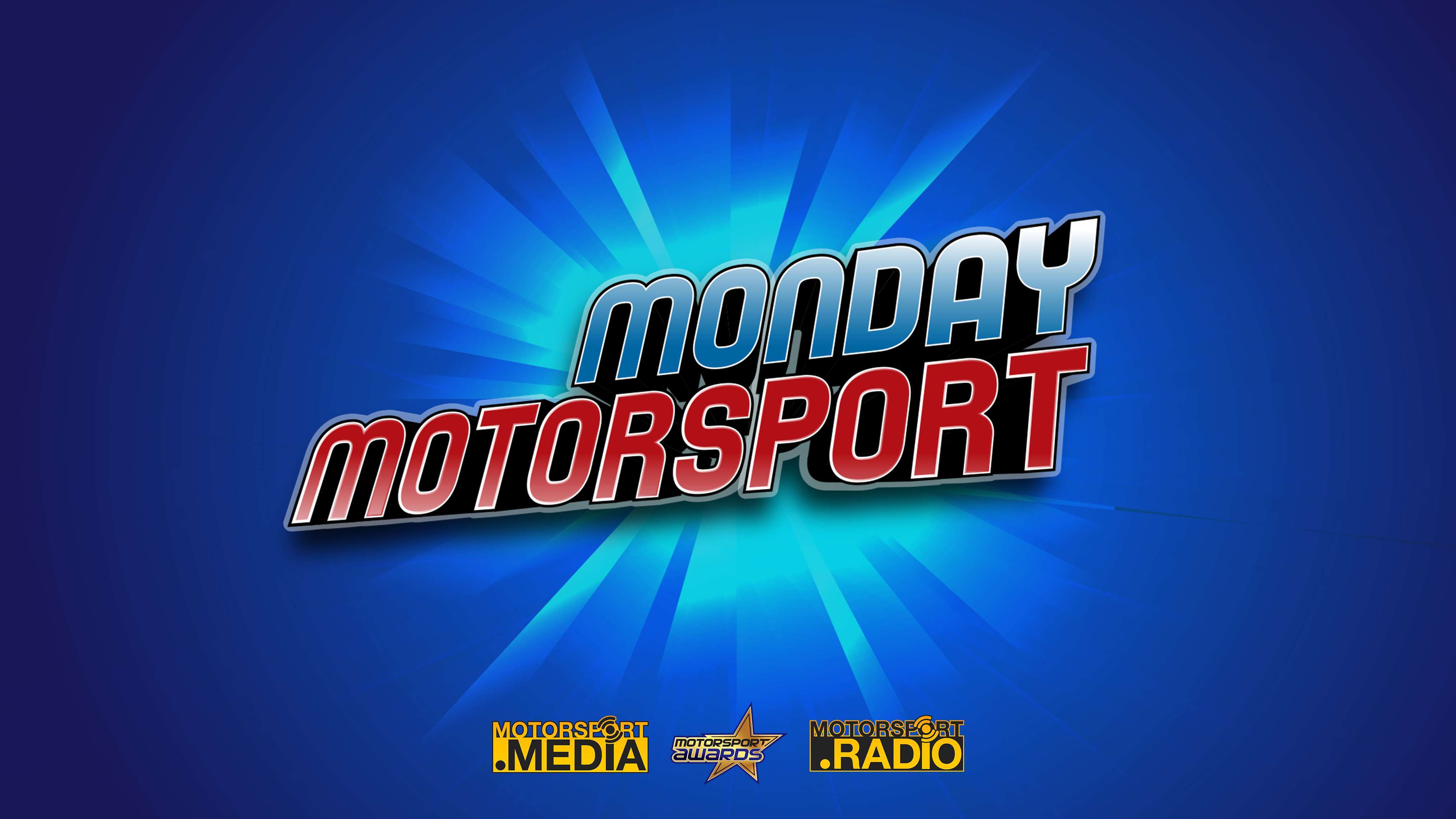
![[ID: x1SiRC5jhW4] Youtube Automatic](https://motorradio-xijqc.projectbeta.co.uk/wp-content/uploads/2022/04/id-x1sirc5jhw4-youtube-automatic-360x203.jpg)
![[ID: lMZ8lAeLubk] Youtube Automatic](https://motorradio-xijqc.projectbeta.co.uk/wp-content/uploads/2022/04/id-lmz8laelubk-youtube-automatic-360x203.jpg)
![[ID: GAYCcnqyFo4] Youtube Automatic](https://motorradio-xijqc.projectbeta.co.uk/wp-content/uploads/2022/04/id-gayccnqyfo4-youtube-automatic-360x203.jpg)
![[ID: Gg142H296QY] Youtube Automatic](https://motorradio-xijqc.projectbeta.co.uk/wp-content/uploads/2022/04/id-gg142h296qy-youtube-automatic-360x203.jpg)
![Private: [ID: 71rYi-xncgM] Youtube Automatic](https://motorradio-xijqc.projectbeta.co.uk/wp-content/uploads/2024/08/private-id-71ryi-xncgm-youtube-a-1-236x133.jpg)
![Private: [ID: H6XRkf6kROQ] Youtube Automatic](https://motorradio-xijqc.projectbeta.co.uk/wp-content/uploads/2024/07/private-id-h6xrkf6kroq-youtube-a-1-236x133.jpg)
![Private: [ID: Kb6w-qAmKls] Youtube Automatic](https://motorradio-xijqc.projectbeta.co.uk/wp-content/uploads/2023/12/private-id-kb6w-qamkls-youtube-a-236x133.jpg)
![Private: [ID: nc-8g6ROCe8] Youtube Automatic](https://motorradio-xijqc.projectbeta.co.uk/wp-content/uploads/2023/11/private-id-nc-8g6roce8-youtube-a-236x133.jpg)
![Private: [ID: wWrhfjOQuIc] Youtube Automatic](https://motorradio-xijqc.projectbeta.co.uk/wp-content/uploads/2023/11/private-id-wwrhfjoquic-youtube-a-236x133.jpg)